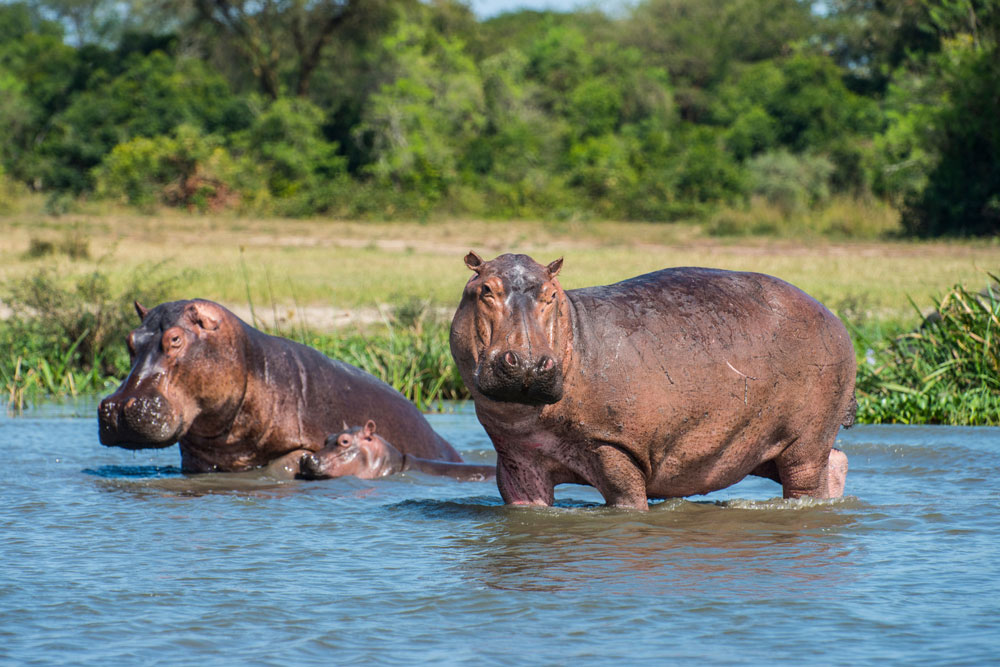The common hippopotamus (Hippopotamus amphibius) is the third largest land mammal and one of Africa’s most dangerous animals. Hippos spend daylight hours submerged in rivers and lakes and graze on nearby grasslands at night; despite their stocky build they can run surprisingly fast. They are responsible for more human fatalities in Africa than any other large species and are hunted primarily as problem animals in areas where they damage crops or threaten communities. Their ivory‑bearing teeth and enormous size make them a coveted trophy for experienced hunters.

Hippo hunting opportunities exist in several southern and eastern African countries, but seasons vary. In Zimbabwe and fenced areas of South Africa, hunts are available year‑round, while Mozambique’s season runs from April 1 to November 30 and Zambia’s from May to November. In Tanzania, hunting is allowed between July 1 and December 31; crop‑raiding hippos may be taken at night but most hunts occur at first light when hippos leave the water to graze. On land, hunters attempt a walk‑and‑stalk, but hippos have excellent hearing and will dash back to water at the slightest disturbance. If the animal submerges, guides may build a temporary hide on the bank and wait for it to resurface so a brain shot can be taken.
Hippo populations are declining due to habitat loss and illegal hunting for ivory. The African Wildlife Foundation notes that these mammals require deep water and adjacent grazing; increasing competition for water resources and unregulated trade in hippo teeth threaten their surviva. Hippos are listed as vulnerable on the IUCN Red List and appear on Appendix II of CITES, meaning international trade in hippo parts is regulated but quotas vary by country. Ten African countries recently sought to uplist hippos to Appendix I, reflecting growing concern over ivory trade. Regulated trophy hunting under national quotas and problem‑animal control permits provides funds for anti‑poaching and incentivises communities to conserve wetlands and riparian habitats.
Hippos can weigh more than 3,000 pounds and have canine teeth that may exceed 20 inches. They mark territory by flicking dung with their tails, and bulls defend harems of females with violent fights. Because hippo meat is highly prized by local communities, meat from a legal hunt is often distributed to villages. Hunters should use a minimum .375 calibre rifle with solid bullets and be prepared for follow‑up shots. Stalking along hippo paths near rivers or waiting in blinds over known crossings is an effective technique.
Hippopotamus can be found in the following location:
Hippopotamus has the following variations:
- (Varieties to be confirmed)
Start Your Adventure



